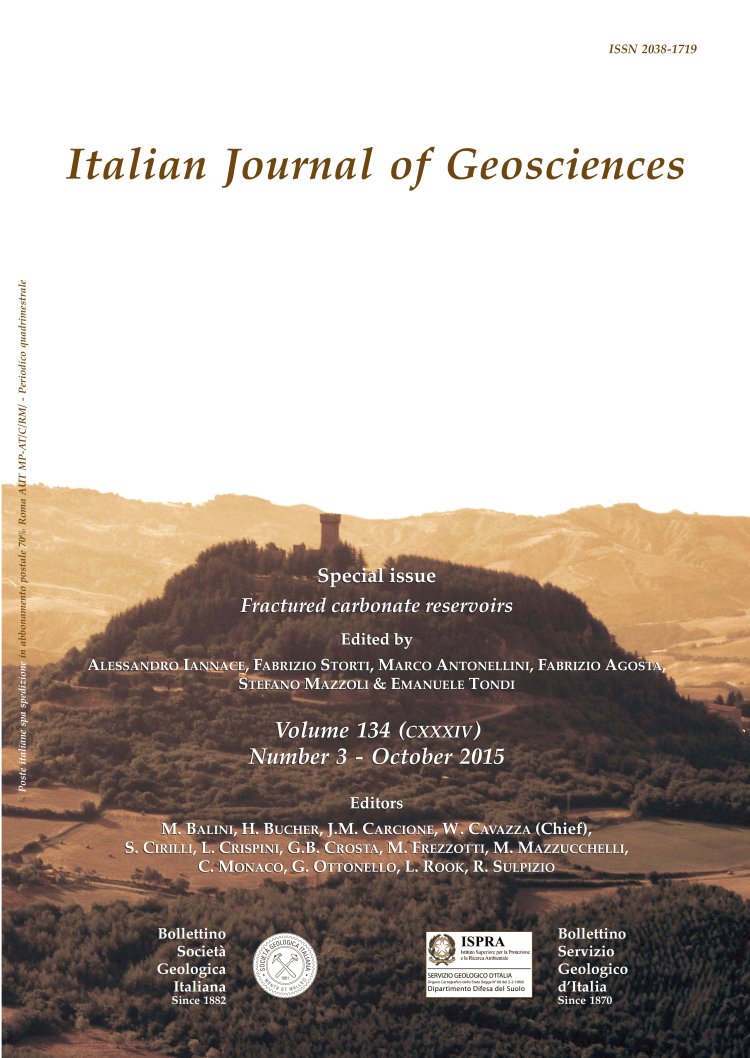
The role of stratabound fractures for fluid migration pathways and storage in well-bedded carbonates
Vincenzo Guerriero (*), Francesco Dati (*), Maurizio Giorgioni (**), Alessandro Iannace (*), Stefano Mazzoli (*) & Stefano Vitale (*)
(*) Dipartimento Scienze della Terra, dell'Ambiente e delle Risorse (DiSTAR), Università di Napoli Federico II, Largo San Marcellino, 10 - 80138 Naples, Italy. Corresponding author e-mail: vincenzo.guerriero@unina.it
(**) Shell Italia E&P, Rome, Italy.
Volume: 134 (2015) f.3
Pages: 383-395
Abstract
Fracture analysis, carried out on two reservoir analogues cropping out at Faito and Chianello Mts. (southern Italy) allowed us to unravel the role of stratabound joint networks for oil migration and storage within well-bedded carbonate successions. The fracture regression analysis pointed out that stratabound fracture aperture increases as a function of bed thickness according to a linear law, independently by the lithological characteristics of the analyzed rock. Furthermore, statistical results suggest that fracture aperture and spacing exhibit, for each bed thickness value, a lognormal probability distribution. The estimation of the stratabound fracture porosity allowed us to identify, in well-bedded sedimentary successions, three classes of multilayer packages: (i) thin beds, characterized by a dual role of permeable pathways and oil storage systems; (ii) medium sized beds, showing limited permeability and porosity values and (iii) thick beds, acting as highly permeable pathways and showing a negligible storage capacity. Our results permit a full characterization and modeling of stratabound fracture networks. In particular, they provide a powerful tool for predicting preferential fluid pathways and major oil storage systems based on bed thickness data, within the framework of an analysis that may be further enhanced by the integration of petrophysics data.
Keywords
Get Full Text